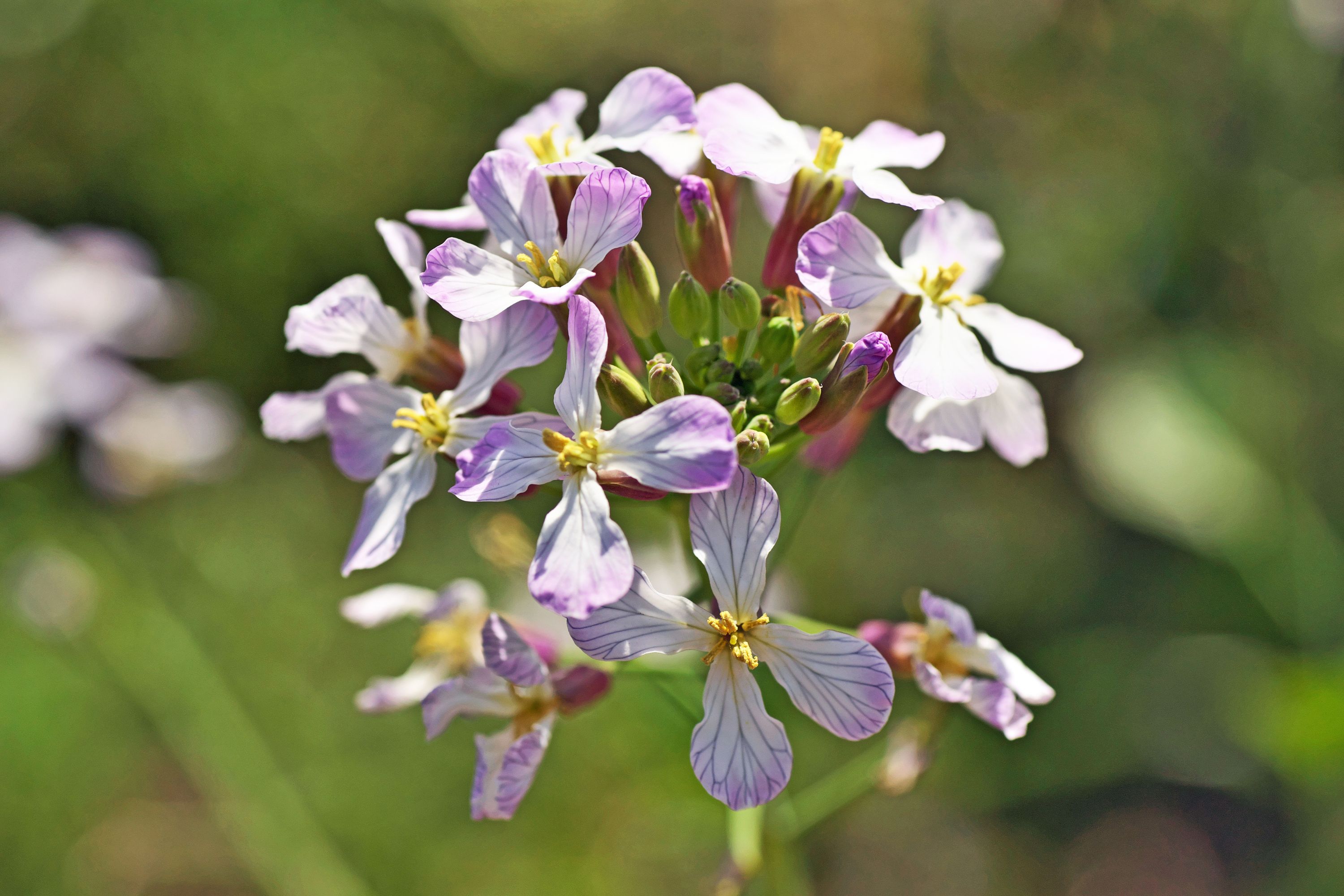Dame's rocket
(Hesperis matronalis)

Description
Hesperis matronalis, commonly known as dame's rocket, is a herbaceous perennial plant native to Europe and Asia. It belongs to the family Brassicaceae, which also includes cabbage, broccoli, and mustard. Hesperis matronalis is cultivated as an ornamental plant for its attractive flowers and sweet fragrance. However, it is considered invasive in some parts of North America, where it has escaped from cultivation and naturalized in the wild. In this article, we will discuss the taxonomy, morphology, distribution, cultivation, and uses of Hesperis matronalis. Taxonomy: The scientific name of Hesperis matronalis is derived from the Greek words "hesperos," meaning evening, and "matronalis," meaning matronly or motherly. It was first described by the Swedish botanist Carl Linnaeus in his book Species Plantarum in 1753. Hesperis matronalis has several common names, including dame's rocket, sweet rocket, damask violet, and night-scented gilliflower. Morphology: Hesperis matronalis is a perennial plant that grows up to 1-1.5 meters tall. It has a rosette of basal leaves that are 10-25 cm long and 2-6 cm wide. The leaves are lanceolate to oblanceolate in shape, with toothed or lobed margins. The stem of the plant is erect, leafy, and slightly hairy. The flowers of Hesperis matronalis are produced in terminal racemes that are 15-30 cm long. Each raceme contains 20-30 flowers that are 2-3 cm in diameter. The flowers are four-petaled, with pink, purple, or white petals that are arranged in a cross shape. The petals are fragrant and emit a sweet scent in the evening, which attracts moths and other nocturnal insects for pollination. The fruit of Hesperis matronalis is a slender, cylindrical silique that is 4-7 cm long and contains numerous small seeds. Distribution: Hesperis matronalis is native to Europe and Asia and has been introduced to North America and other parts of the world as an ornamental plant. It is commonly found in gardens, parks, and along roadsides. In North America, it has become naturalized in many areas and is considered invasive in some regions. Hesperis matronalis prefers moist, well-drained soils and can tolerate a wide range of temperatures and light conditions. Cultivation: Hesperis matronalis is cultivated as an ornamental plant for its attractive flowers and sweet fragrance. It is a hardy plant that can grow in a wide range of soil types and light conditions. It prefers moist, well-drained soils and partial to full sun exposure. Hesperis matronalis is propagated by seeds or by division of the root system in the spring or fall. It is a low-maintenance plant that requires little pruning or fertilization. However, it is important to monitor the plant for signs of disease or insect infestation. Uses: Hesperis matronalis has several uses in traditional medicine and aromatherapy. The plant contains compounds that have anti-inflammatory, analgesic, and sedative properties. It has been used to treat a variety of ailments, including headaches, rheumatism, and insomnia. The fragrant flowers of Hesperis matronalis are also used in perfumes, soaps, and other fragranced products. In addition, the plant is a valuable source of nectar for bees, butterflies, and other pollinators.
Taxonomic tree:







